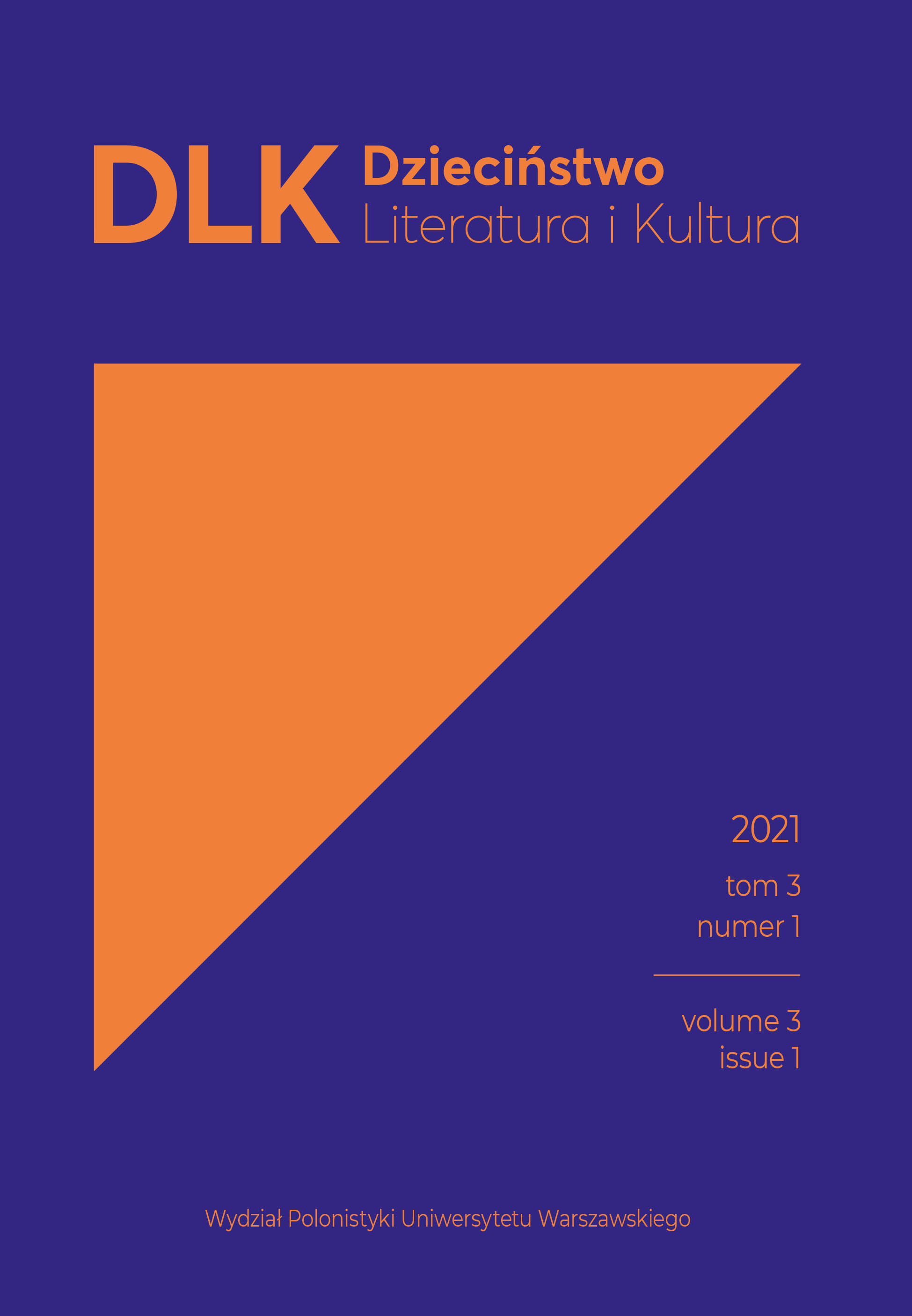The Hidden Childness of a Nobel Prize-Winning Poet: George Seferis’s Limericks for Young Readers
Abstract
In addition to his outstanding poems for adults, George Seferis, the Nobel Prize-winning Greek poet, also wrote verses for children. The limericks he composed as gifts for children of his family were published in a volume entitled Poiḗmata me Zōgraphiés se Mikrá Paidiá [Poems with Drawings for Young Children] (1975), discussed in this paper. With these limericks, Seferis turned to the Anglo-Saxon poetic tradition of nonsense to oppose the ‘seriousness’ of adult life, while also coping with painful family memories and the dark atmosphere of World War II. He employed humour and playfulness as an antidote to harsh realities. Accompanied by surreal drawings, the playful verses became the playground where Seferis met his child readers as well as his childness.
Received: 30.06.2022
Accepted: 16.06.2023
Keywords
childness; George Seferis; Greek children’s literature; limericks; Nobel Prize-winning poet
References
Apseloff, M. (1973). Children’s books by famous writers for adults. Children’s Literature, 2, 130–138. https://doi.org/10.1353/chl.0.0231.
Beaton, R. (2003). George Seferis: Waiting for the angel – A biography. Yale University Press.
Bourdieu, P. (1996). The rules of art: Genesis and structure of the literary field (S. Emanuel, Trans.). Polity Press. (Original work published 1992).
Chidiroglou-Zachariadi, A. (1983). Prótupa tōn ‘kalligraphēmátōn’ tou Sephérē. Ekivolos, 12, 969–984.
Dilworth, T. (1994). Society and the self in the limericks of Lear. Review of English Studies: New Series, 45(177), 42–62.
Ede, L. (1987). An introduction to the nonsense literature of Edward Lear and Lewis Carroll. In W. Tigges (Ed.), Explorations in the field of nonsense (pp. 47–60). Rodopi.
Even-Zohar, I. (1990). Polysystem theory. Poetics Today, 11(1), 9–26. https://doi.org/10.2307/1772666.
Furniss, T., & Bath, M. (2007). Reading poetry: An introduction. Pearson Education Ltd.
Galef, D. (1995). Crossing over: Authors who write both children’s and adults’ fiction. Children’s Literature Association Quarterly, 20(1), 29–35. https://doi.org/10.1353/chq.0.0905.
Garantoudis, E. (2000). Ē poíēsē tou Giṓrgou Sephérē anámesa ston émmetro kai ston eleúthero stíkho. In K. Kostíou (Ed.), O Giṓrgos Sephérēs ōs anagnṓstēs tēs eurōpaïkḗs logotekhnías (pp. 133–159). University Studio Press.
Hassett, C. W. (2017). Does it buzz? Image and text in Edward Lear’s limericks. Victorian Literature and Culture, 45(4), 685–707.
Hunt, P. (2005). Introduction: The expanding world of children’s literature. In P. Hunt (Ed.), Understanding children’s literature (2nd ed., pp. 1–14). Routledge.
Kokkinos, D. (2008). Ē skhésē tou Giṓrgou Sephérē me to érgo tou Edward Lear kai ta paidiká límeriks. Paidagogika Revmata sto Aigaio, 3, 54–67.
Lear, E. (1872). More nonsense, pictures, rhymes, botany, etc. Robert John Bush.
Lederer, R. (2019). The art of the bird. University of Chicago Press.
Mason, D. (2004). Close to Seferis. The Hudson Review, 57(1), 150–158.
Mitchell, D., & Snyder, S. (2000). Narrative prosthesis: Disability and the dependencies of discourse. University of Michigan.
Nodelman, P. (2008). The hidden adult: Defining children’s literature. Johns Hopkins University Press.
Politis, D. (1994). Giṓrgos Sephérēs: Mia ‘dokimḗ’ stēn paidikḗ diástasē tēs poíēsḗs tou. Epitheorisi Paidikis Logotechnias, 9, 161–181.
Rieder, J. (1998). Edward Lear’s limericks: The function of children’s nonsense poetry. Children’s Literature, 26, 47–60. https://doi.org/10.1353/chl.0.0040.
Savidis, G. P. (1986). The tragic vision of Seferis. Grand Street, 5(2), 153–174. https://doi.org/10.2307/25006852.
Seferi, M. (1986). Anamnḗseis apó tē zōḗ mou me ton Sephérē (sunomilía me ton Antṓnē Phōstiérē kai ton Thanásē Niárkho). I Lexi, 53, 190–205. http://www.ekebi.gr/magazines/ShowImage.asp?file=35428&code=8518.
Seferis, G. (1969). George Seferis’s statement denouncing the Colonel’s regime. Retrieved June 11, 2023, from https://www.characters.gr/site/en/stories/classic/seferis-dilwsi-xounta-en.
Seferis, G. (1974). Dokimés, A΄. Icarus.
Seferis, G. (1975). Poiḗmata me Zōgraphiés se Mikrá Paidiá. Hermes.
Seferis, G. (1976). Tetrádio gumnasmátōn II. Icarus.
Seferis, G. (1977). Méres, D΄. Icarus.
Shavit, Z. (1986). Poetics of children’s literature. University of Georgia Press.
Snider, C. (2009). Victorian trickster: A Jungian consideration of Edward Lear’s nonsense verse. Retrieved June 11, 2023, from https://home.csulb.edu/~csnider/edward.lear.html.
Stathi-Schorel, A. (2003). Éna stílvon podḗlato: Dekaéxi sunomilíes gia tē neoellēnikḗ logotekhnía. Patakis.
Stewart, S. (1979). Nonsense: Aspects of intertextuality in folklore and literature. Johns Hopkins University Press.
Tarnogórska, M. (2015). ‘Funny’ and ‘curious’ verse: The limerick in Polish children’s literature. Bookbird, 53(3), 37–45. https://doi.org/10.1353/bkb.2015.0062.
Tsatsos, I. (1982). My brother George Seferis (J. Demos, Trans.). North Central Publishing. (Original work published 1973).
University of Patras Greece
https://orcid.org/0000-0002-2383-2403
Dimitris Politis – PhD, Professor in the Department of Educational Sciences and Early Childhood Education of the School of Humanities and Social Sciences at the University of Patras (Greece). His research interests include children’s literature, theory of literature, and teaching of literature. Contact: dimpolitis@upatras.gr.
National and Kapodistrian University of Athens Greece
https://orcid.org/0000-0003-4680-1551
Angela Yannicopoulou – PhD, Professor in the Department of Preschool Education of the School of Education at the National and Kapodistrian University of Athens (Greece). Her research interests include picturebooks, book materiality, and ideology. Contact: aggianik@ecd.uoa.gr.

This work is licensed under a Creative Commons Attribution 4.0 International License.
Open Access Policy
All articles presented on the pages of ”Dzieciństwo. Literatura i Kultura” are published in open access under a Creative Commons license - Attribution 4.0 International (CC BY 4.0). It means that:
- they can be made available and quoted under the condition of explicit and clear indication of the author/authors of the referenced text;
- you cannot use legal or technological means that would limit others in using the text under the terms of the license.
More information: https://creativecommons.org/licenses/by/4.0/





